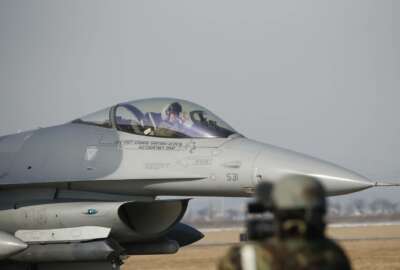
Air Force takes local approach to preventing violence
The Air Force is giving its installations more of a say in violence prevention.
The Air Force is trying to tailor is violence prevention and resilience programs to a more local level with a recently-adopted “Getting to Outcomes” approach.
The approach is a 10-step guide developed by the RAND Corporation and the University of South Carolina and helps communities develop plans around violence that are tailored to their community.
“An installation will say ‘These are our leading priorities and this is how we are going to get after this,’” said Senior Adviser for Prevention for Air Force Resilience Andra Tharp during an interview with Federal News Radio at the Pentagon. “Getting to Outcomes has been in development for probably the past 20 years and evaluated in a variety of different civilian and community settings. What they have found is using this approach improves the quality of implementation and really the ability of a community to implement an evidence-based approach.”
The program breaks down issues into actionable, but approachable steps. Steps 1 to 6 involve various planning activities such as needs assessments, goal setting, program selection, ensuring appropriate program fit and capacity, along with fleshing out program details. Steps 7 and 8 cover process and outcome evaluation, while steps 9 to 10 focus on the use of data to improve and sustain programs, according to an Air Force press release.
Think of it almost like a scientific method for different bases to follow to make sure they can get the best results.
“It’s a proven process that any problem can be worked into,” Tharp said. “To get the process started every two to three years the Air Force conducts a community needs assessment. That assessment was completed and installation reports were given the results. Then we trained the major commands in this process and then we went through two different trainings with installations with over 300 participants.”
Those participants will go forward and create the community action plans by the end of the year.
Tharp said the Air Force hopes to see the first results of the program by early 2019.
“It will be the first time that every installation is driving their own priorities as in terms of their prevention and resilience programming rather than everyone doing the same thing as we have done traditionally,” Tharp said.
Read more of the DoD Personnel Notebook.
Copyright © 2025 Federal News Network. All rights reserved. This website is not intended for users located within the European Economic Area.
Scott Maucione is a defense reporter for Federal News Network and reports on human capital, workforce and the Defense Department at-large.
Follow @smaucioneWFED





